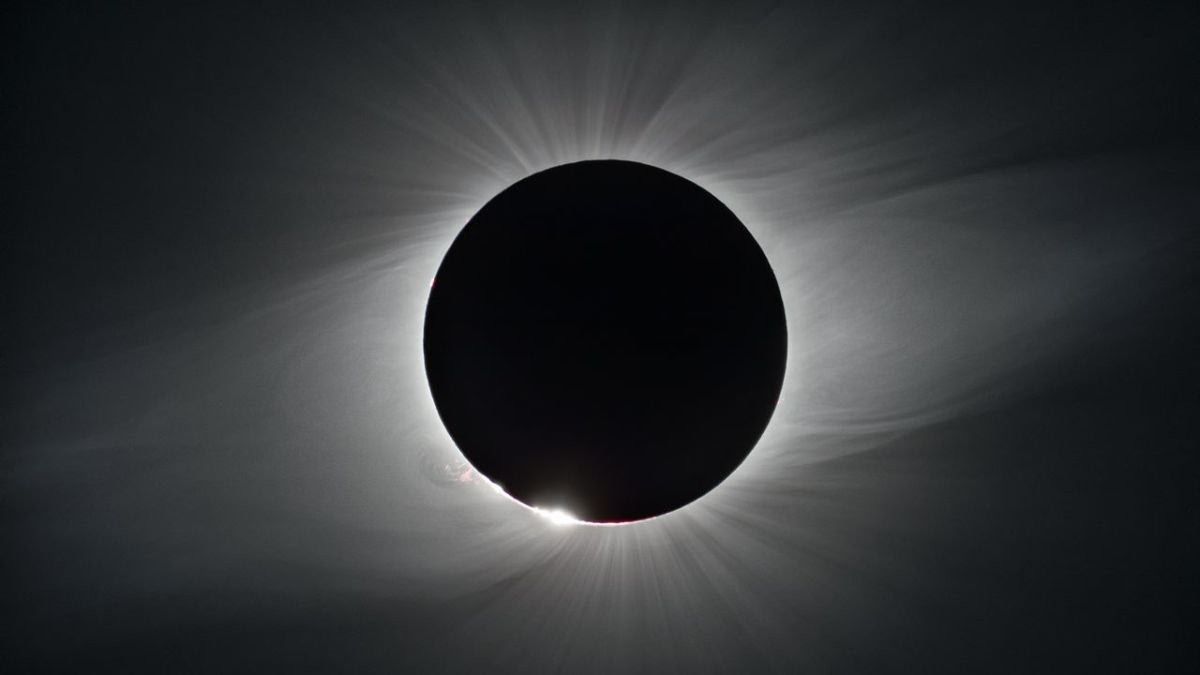JAKARTA - Today is right, Monday, December 14, 2020, the phenomenon of the Total Solar Eclipse (GMT) sky will occur again. The route is known to pass through the Pacific and Atlantic oceans.
Unfortunately, Indonesians cannot see this solar eclipse. Because this sky phenomenon will only visit parts of South America and Africa.
Reporting from the Space page, when GMT occurs, the area traversed will be dark for 2 minutes 10 seconds. Meanwhile, according to Lapan, the GMT peak will occur at 23.16 WIB. This solar eclipse will coincide with the new moon phase or the conjunction phase.
Take a look at a few VOI reviews regarding the total solar eclipse phenomenon, which is rarely known to the public.
What is the phenomenon of a solar eclipse?A solar eclipse is an event in which the position of the Moon, Sun and Earth are aligned and are in a straight line. At that time, the Moon will pass between the Sun and Earth, for some time the Sun's light to Earth will be blocked by the shadow of the Moon.
When that total phase occurs, the Moon will cover the Sun, and the Sun's corona will appear to be sticking out from the edge of the part that is covered by the Moon. These solar eclipses are rare, because the Moon's orbit is tilted towards the Sun and does not always align with the Star.
Partial Solar Eclipse:
This natural phenomenon is when the Moon is not completely aligned with the Sun, so that only a part of it blocks sunlight from reaching Earth.

Annular Solar Eclipse:
Occurs when the Moon and Sun are both parallel, but the Moon is farther away from Earth or Earth is closer to the Sun. When this phenomenon occurs, the Moon appears to be smaller in size than the Sun, and the Sun then appears as a very bright ring, or annulus, around the Moon's dark disc.
Total Solar Eclipse:
This time, the phenomenon will occur when the dark silhouette of the Moon completely covers the intense bright light of the Sun. Only the Sun's corona is much fainter, during a Total Solar Eclipse.
How to Watch a Total Solar EclipseUnfortunately, this time Indonesia does not have the opportunity to see the solar eclipse directly. Because, this phenomenon will only occur in parts of South America, so that relatively few people can witness it firsthand.
However, some live broadcast of the natural phenomenon will ensure fans of the Solar Eclipse have the opportunity to see, wherever they are.
On this occasion, NASA TV will broadcast live the eclipse from the Pontificia Universidad Católica de Chile via a telescope at the Observatorio Docente.
The live broadcast will begin at 9:40 am ET local time, with the program narrated in Spanish at 10:30 AM ET and the total eclipse set for 11:02 ET. Click the link here to watch. https://www.nasa.gov/nasalive/
Later, NASA will present real-time views of the eclipse and discussions with two NASA scientists, namely Yari Collado-Vega and Bea Gallardo-Lacourt. The two will also explain how researchers use eclipses to study the Sun.
For those who can see the eclipse firsthand, there are a few things to follow. Never look directly at the sun, and be sure to wear special solar eclipse glasses to protect your eyes. It should be noted, ordinary sunglasses are not enough.
Anyone in the center line of the phenomenon's totality only has about 2 minutes 10 seconds to see the Total Solar Eclipse in clear weather conditions.
For information, the next Total Solar Eclipse will not come until December 4, 2021. Fortunately, 2020 still has one last celestial phenomenon such as the great conjunction of Jupiter and Saturn on December 21.
Solar Eclipse Facts1. Every year there are between two to five solar eclipses.
2. Total Solar Eclipses occur when the Moon completely obscures the Sun leaving only the sun's corona faint, known as the Totality.
3. Total solar eclipses are rare, occurring only once every 18 months.
4. There is another type of solar eclipse, known as a hybrid eclipse, which shifts between a total eclipse and an annular eclipse depending on where you view it from Earth. However, this is relatively rare.
5. The speed of the Moon as it moves across the Sun is approximately 2,250 km (1,398 miles) per hour.
6. A partial solar eclipse can only be seen from either the North Pole or the South Pole.
7. Time to witness the natural phenomenon of Gatahari Matahari Total can last a maximum of 7 minutes 30 dedeti
8. There is also an almost identical eclipse that occurs after 18 years and 11 days, known as the Saros Cycle.
9. This year, the Total Solar Eclipse will also be related to the Geminid meteor shower phenomenon, and this can be witnessed by Indonesians. The attraction is in the form of debris from the asteroid 3200 Phaeton as much as 150 meteors per hour.
And it will be published at 19.58 WIB, but the best time to observe the peak of the Geminid meteor shower is at 02.00 WIB. Because at that time the direction of the meteor was at the highest point in the sky.
The English, Chinese, Japanese, Arabic, and French versions are automatically generated by the AI. So there may still be inaccuracies in translating, please always see Indonesian as our main language. (system supported by DigitalSiber.id)













